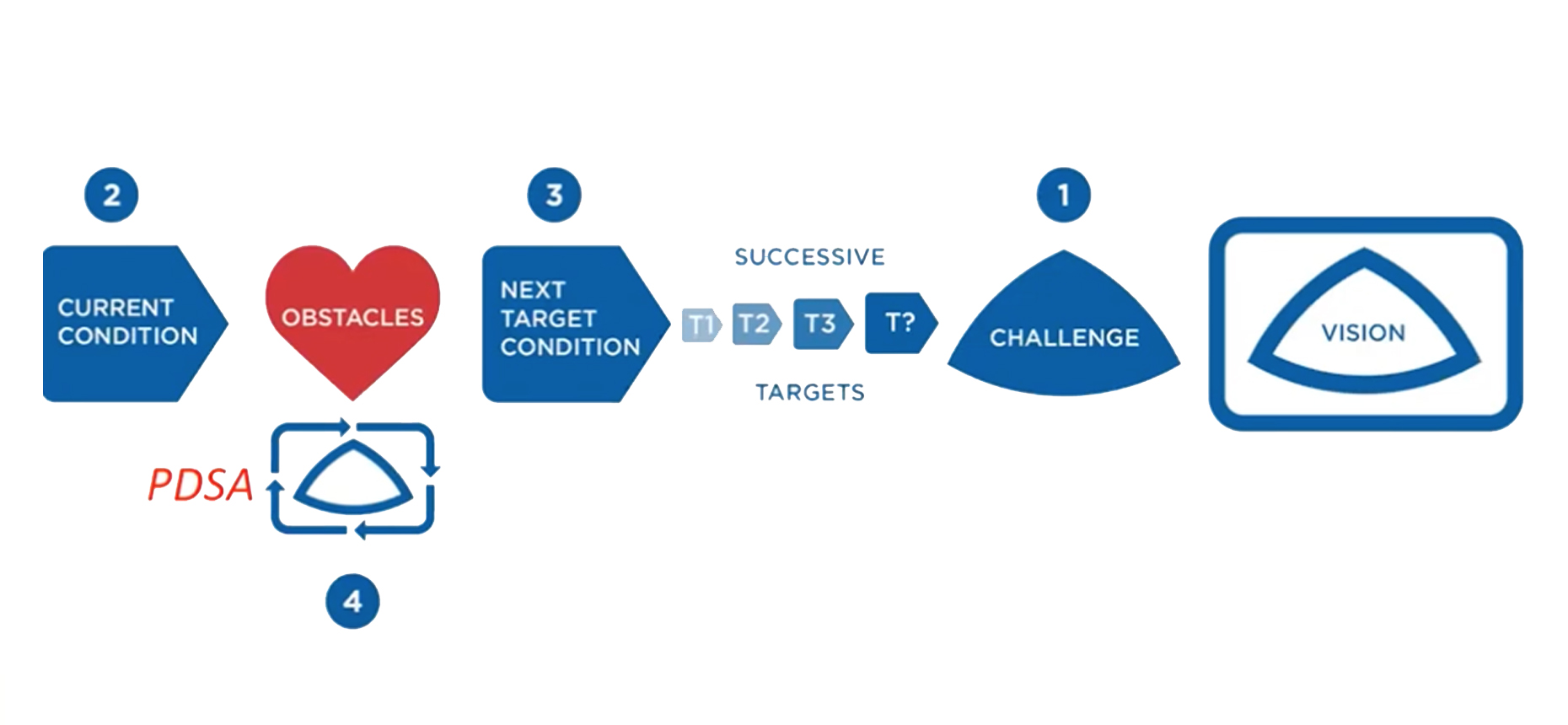In a clip from a recent LEI webinar, Skip Steward, vice president and chief improvement officer at Baptist Memorial Health Care, describes the organization’s approach to kata — its mental model — and shares the tremendous results it achieved by adopting kata practices. Watch the video or read a lightly edited transcript below.
We have folks throughout Baptist since the summer of 2015 who are learning how to experiment their way forward. They’re learning how to improve patient care — every element of patient care — by experimenting their way forward.
You can see our friend Beth [Carrington, LEI’s Improvement Kata/Coaching Kata program developer and instructor] in the top [left] corner, where she is doing master coaching. We are very indebted to Beth. She has taught us so much and me personally, and we have seen a tremendous impact.
We’ve achieved things like infection rates in certain hospitals being cut by 68%. We’ve seen throughput in an OR [operating room] improve by 75%. We saw one area where the folks reduced the [insurance] denials by a million dollars. I could keep on going on.
We’ve achieved things like infection rates in certain hospitals being cut by 68%. We’ve seen throughput in an OR [operating room] improve by 75%.
But the important thing to remember: this was not Skip and his team that did this; this was the real people on the front lines, learning how to think creatively, think scientifically, to experiment their way forward.
So you can see the four-step improvement kata (see the banner image at the top of this page); we’ve “Baptized” it. Mike Rother always likes to tease me about he’s never had it baptized before. And I said, “Well, you have now.”
So there’s our four-step improvement kata — on the far right is our logo. That probably doesn’t mean much to you, but what looks like a triangle represents that we’re a not-for-profit healthcare system in Tennessee, Mississippi, and Arkansas, and that represents the threefold ministry of Christ. The rectangle represents our system, where I just put the word “vision.” Each step frames the next step.
Once we understand what our challenge is, what we’re trying to accomplish, normally for us 52 weeks into the future, then that’s going to frame the next step of “Where are we at today? What’s the current condition?”
Once we understand that, we then move to the next target condition. The magic word, there’s the word “next.” It implies there will be multiple target conditions on our way to the challenge.
The target condition is typically two to three weeks into the future. And then, we have obstacles separating us from what we want to do in the target condition. And then we PDSA (plan, do, study, act) through that process. (PDSA is a variant of PDCA, where the “C” means “check.”) Or, as my friend Beth likes to say, it’s a meta-routine, a routine that stays the same regardless of the circumstances; it’s a routine way of acting and thinking.
There’s a strong emphasis in everything we do at the Baptist Management System to infuse this kata thinking and use this element of PDSA. So, even in conversations at Baptist, you’ll hear people say, “Well, this is what we’re going to do — that’s the plan.”
The next part is, I ask, “What do you expect to happen as a result of doing that?” So, that’s part of that plan session. Then we’re going to do something. Then we find out what happened. Many times that’s different than what we thought was going to happen. And then, we evaluate, we adjust based on what we learned.
This [kata] process is helping us move through these really unpredictable times, especially during Covid.
This [kata process] is helping us move through these really unpredictable times, especially during Covid. When Covid hit us, we saw the thinking we had been investing in since 2015. People were using that [kata] thinking as they were maneuvering all these new obstacles that this pandemic brought us.
Editor’s Note: This Lean Post is an updated version of an article published on October 8, 2021.



